|

POWER -
Although some countries act as though there is no energy crisis, in fact
they have departments for such matters, that are there to advise for how
much longer they can abuse their positions in world politics, to take
advantage of other countries and keep on killing species and warming the
planet - before their kleptocratic
inclinations are compromised.
Fusion power is a theoretical form of power generation in which
energy will be generated by using nuclear fusion reactions
from hydrogen to produce heat for electricity generation. In a fusion process, two lighter atomic nuclei combine to form a heavier nucleus, and at the same time, they release energy.
Today this is just a pipedream. But what a dream.
Fusion is the energy source of
the Sun and stars. In the tremendous heat and gravity at the core of these stellar bodies, hydrogen nuclei collide, fuse into heavier helium atoms and release tremendous amounts of energy in the process.
Twentieth-century fusion science identified the most efficient fusion reaction in the laboratory setting to be the reaction between two hydrogen isotopes, deuterium (D) and tritium (T). The DT fusion reaction produces the highest energy gain at the "lowest" temperatures.
Three conditions must be fulfilled to achieve fusion in a laboratory: very high temperature (on the order of 150,000,000° Celsius); sufficient plasma particle density (to increase the likelihood that collisions do occur); and sufficient confinement time (to hold the plasma, which has a propensity to expand, within a defined volume).
At extreme temperatures, electrons are separated from nuclei and a gas becomes a
plasma - often referred to as the fourth state of matter. Fusion plasmas provide the environment in which light elements can fuse and yield energy.
In a tokamak device, powerful magnetic fields are used to confine and control the plasma.
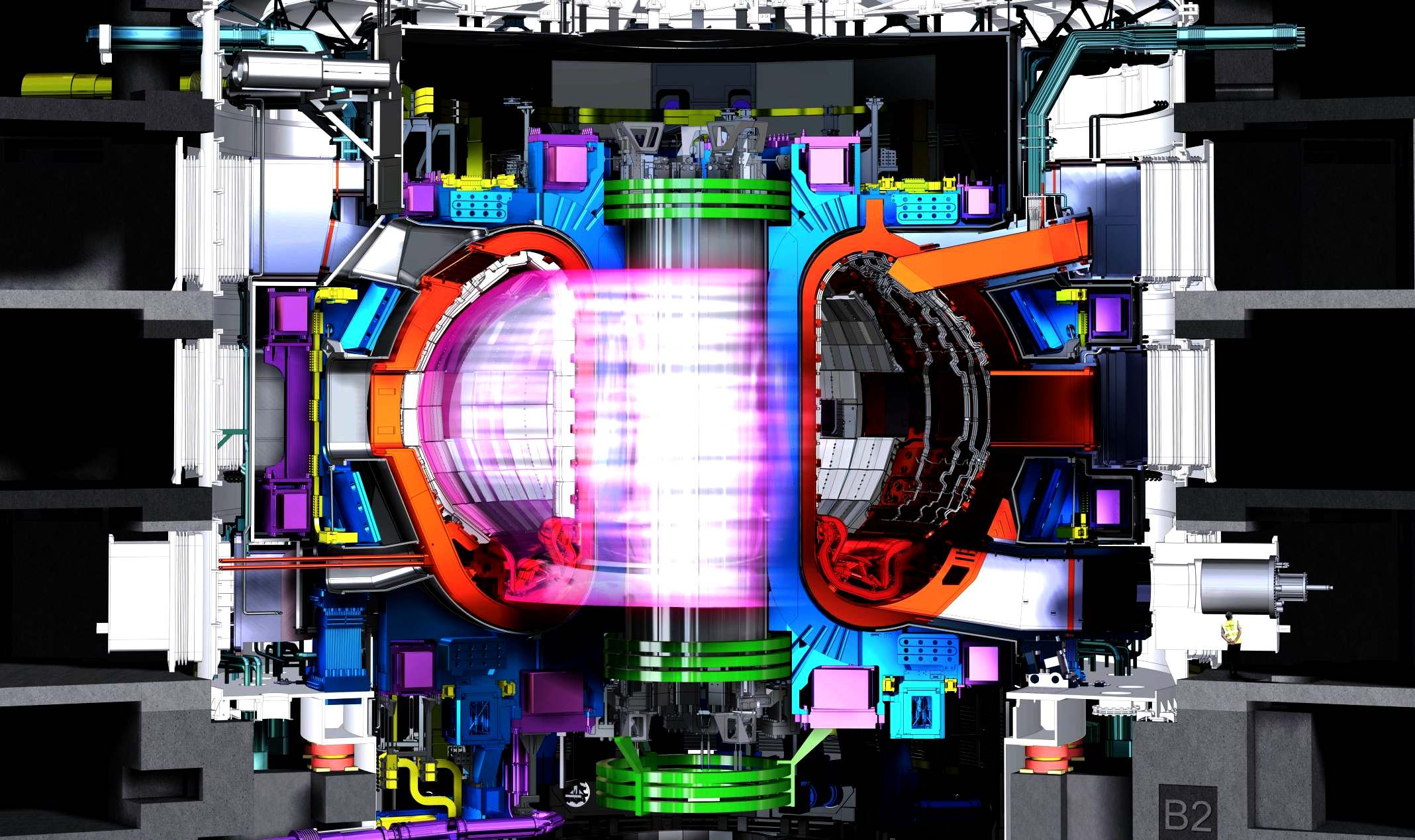
ITER
TOKAMAK - INTERNATIONAL
THERMONUCLEAR EXPERIMENTAL REACTOR
The heart of a tokamak is its doughnut-shaped vacuum chamber.
Inside, under the influence of extreme heat and pressure, gaseous hydrogen fuel becomes a plasma—a hot, electrically charged gas. In a star as in a fusion device, plasmas provide the environment in which light elements can fuse and yield energy.
The charged particles of the plasma can be shaped and controlled by the massive magnetic coils placed around the vessel; physicists use this important property to confine the hot plasma away from the vessel walls. The term "tokamak" comes to us from a Russian acronym that stands for "toroidal chamber with magnetic coils" (тороидальная камера с магнитными катушками).
To start the process, air and impurities are first evacuated from the vacuum chamber. Next, the magnet systems that will help to confine and control the plasma are charged up and the gaseous fuel is introduced. As a powerful electrical current is run through the vessel, the gas breaks down electrically, becomes ionized (electrons are stripped from the nuclei) and forms a plasma.
As the plasma particles become energized and collide they also begin to heat up. Auxiliary heating methods help to bring the plasma to fusion temperatures (between 150 and 300 million °C). Particles "energized" to such a degree can overcome their natural electromagnetic repulsion on collision to fuse, releasing huge amounts of energy.
First developed by Soviet research in the late 1960s, the tokamak has been adopted around the world as the most promising configuration of magnetic fusion device. ITER will be the world's largest tokamak
- twice the size of the largest machine currently in operation, with ten times the plasma chamber volume.

A
fantastic sight that happens all around the world every morning, hydrogen
fusion is happening in space to give us infinite energy. Sunrise
heralds the beginning of each new day. We can count our lucky stars that we
have this one to power life on earth.
CNBC
NEWS APRIL 2019 - Why Bezos and Microsoft are betting on this $10 trillion energy fix for the planet
Key Points:
* Jeff Bezos and others have sunk more than $127 million into General Fusion, a start-up trying to commercialize fusion energy.
* Microsoft is partnering with the company by offering technological know-how.
* Fusion occurs when two light atoms fuse together to make a heavier one, creating energy in the process. It’s the same process that powers the sun and stars.
* The goal is to provide energy to the 1 billion people on the planet that don’t have access to electricity.
Burnaby, British Columbia, is similar to most North American bedroom communities. The majority of its residents commute into neighbouring Vancouver every morning and then head back to their suburban homes at night. There is one thing, though, that sets it apart: Around the corner from one of the two Costcos in town is a small start-up that’s inching ever closer to solving the planet’s energy problems — and tapping into a yet untouched trillion-dollar market.
That start-up, General Fusion, isn’t like the up-and-coming companies you hear about in Silicon Valley, with eccentric founders, rapid growth and millions in revenues, though it does count Jeff Bezos, Microsoft and many others as investors and partners. Rather, it was started in 2002 by then 40-year-old physicist Michel Laberge, who quit a lucrative job at a
laser printing company to follow an unconventional passion: nuclear fusion development.
Laberge, who’s now the company’s chief scientist, was drawn to nuclear fusion because of its world-changing possibilities. Unlike nuclear fission, which involves splitting heavier atoms to create lighter ones and can produce radioactive waste, fusion produces no environmentally harmful gases, no nuclear waste, it can’t be made into a weapon, and it will never cause a power plant meltdown.
Fusion occurs when two light atoms fuse together to make a heavier one, creating energy in the process. It’s the same process that powers the sun and stars. It also uses deuterium, an atom that’s found in hydrogen, which is a key ingredient in water, so there’s little risk of running out of the atoms needed to make fusion. According to Live Science, a gallon of seawater can produce as much energy as 300 gallons of gasoline.
It’s no wonder, then, that people like Bezos and companies like Cenovus Energy have sunk more than $127 million into the company, according to Crunchbase, while billions
more dollars have been invested in about two dozen other nuclear fusion start-ups, government initiatives and big company projects, such as Lockheed Martin’s compact fusion reactor.
So far, no one has commercialized nuclear fusion, but the race is on to be the first to figure it out. Whoever does will be able to bring power to the more than 1 billion who don’t have access to electricity, power cars and help companies operate businesses without having to create harmful emissions.
They’ll also see a massive return on their investment.
“The market is infinitely large,” said Christofer Mowry, General Fusion’s CEO. “There’s nothing that will be more transformative to the energy space than fusion. It’s like how Facebook took over social media or if someone develops a truly practical autonomous vehicle.”
Fusion’s long life
The concept of fusion has been around for nearly a century, with the Russians making the first nuclear reactor in the 1960s to test various scientific theories.
While the concept has been proved, commercializing fusion remains elusive. Why? Because it’s a complex process that can only happen in 100 million degrees Celsius temperatures. Particles must also remain in close proximity with one another, and the plasma, which is ionized gas that’s created during the fusion process, must be contained or risk drifting away.
This process also has to be done cheaply and efficiently enough so that it can be used by people around the world.
“We do not have a reactor yet that is energy positive in terms of the outflow of energy,” said Ariel Cohen, a fusion expert and senior fellow at the Atlantic Council. “It takes so much energy to contain the plasma, but we’re hoping someone will be able to it and make it economically viable.”
What makes things more complicated is that there may be several ways to create the conditions for fusion to occur — and every company is trying something a little different.
Some, like the International Thermonuclear Experimental Reactor, a coalition of governments that are trying to make fusion viable, use the tokamak, which employs magnets to keep plasma from escaping and cooling off.
Others use lasers to rapidly compress hydrogen into frozen pellets that are 1000 times denser than ordinary matter and can achieve a momentary pulse of fusion.
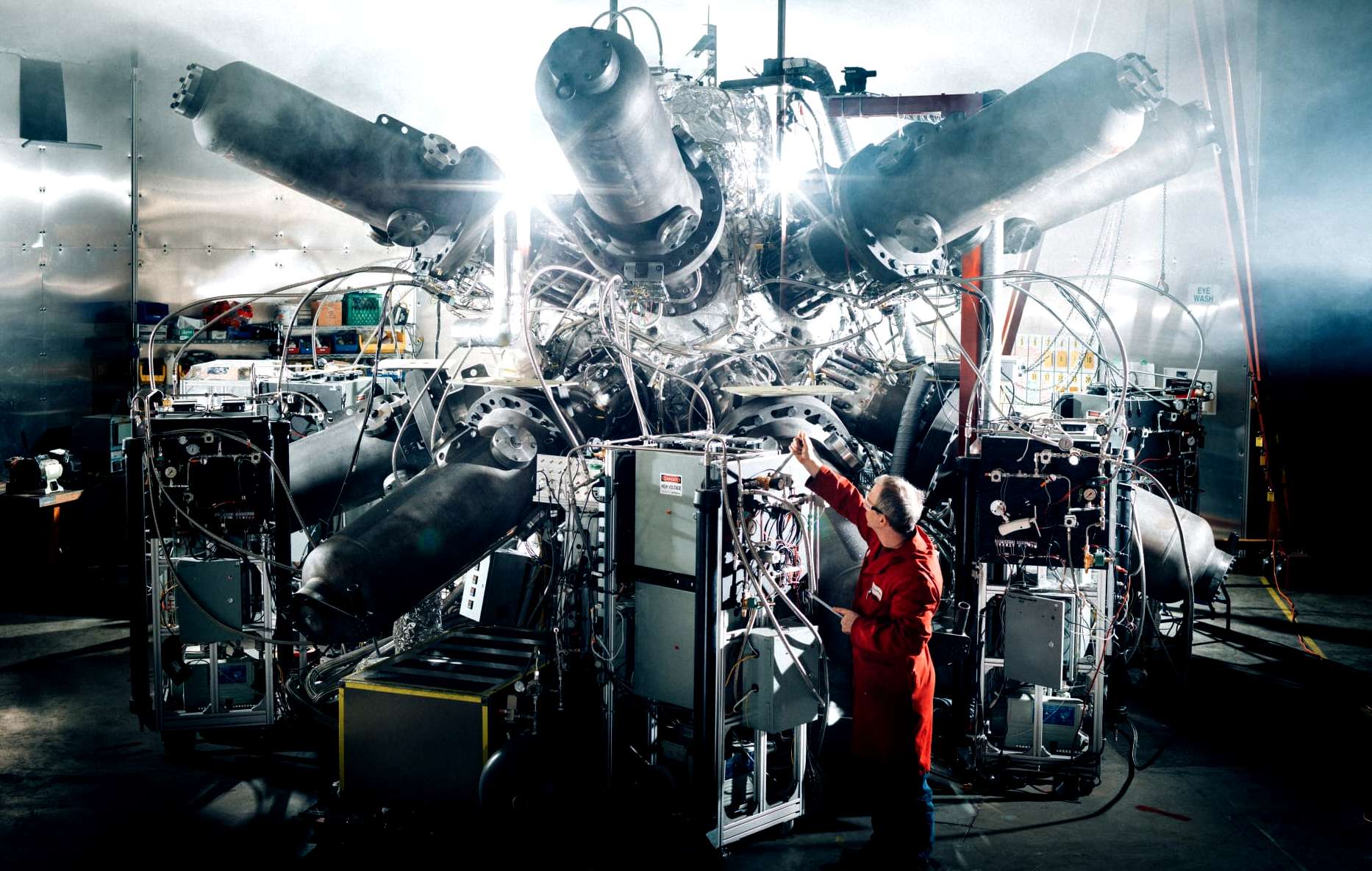
General Fusion uses a hybrid of both, though it doesn’t use lasers. It injects plasma, which is surrounded by liquid metal, into a compression chamber where magnets help contain the gas. Then, pistons put pressure on the chamber to compress the plasma to fusion conditions. The now heated liquid metal gets turned into heat, which then gets turned into electricity.
Race to commercialization
It’s still an open question as to if, and when, fusion can be commercialized. Mowry said General Fusion has built all the components to create a reactor, but now it needs to develop a prototype, which will take five years.
“Using a car analogy, we built an engine, the transmission and the wheels; now we have to put it together and drive it down the road at full size,” he said.
It will take more time after that to build full-scale plants that can be used to power entire cities. If this were football, Mowry said he’d be on the 25-yard line.
Other companies have made varying degrees of progress. For instance, Commonwealth Fusion Systems, a commercial enterprise spun off by MIT, is about seven years away from creating a more energy-efficient Tokamak reactor.
In partnership with MIT, it is creating magnets out of rare-Earth barium copper oxide, which is a recently commercialized superconducting material. Could this be the ticket?
“We need to design the next-generation machine ... that can produce more fusion power than energy needed to heat it,” said Dr. Martin Greenwald, deputy director of the MIT Plasma Science and Fusion Center. “We think we can do that in a relatively short amount of time.”
Even when its components are created — it is currently in the R&D phase and likely won’t start building components for another two-and-a-half years, said Greenwald — it will still need to create a pilot plant to see if it works. Then it needs to commercialize it, he said.
Lockheed Martin, with its decades of engineering experience and government connections, hopes to unlock fusion’s power by creating a compact reactor that’s 10 times smaller than existing reactors. It will be so small that it will fit on the back of a truck, it says on its website.
While the company declined an interview, it says online that it’s trying to mimic the way sun creates fusion. Its cylindrical reactor, which it calls a small magnetic bottle, is similar to a tokamak, but it’s much smaller and uses different magnetic technology.
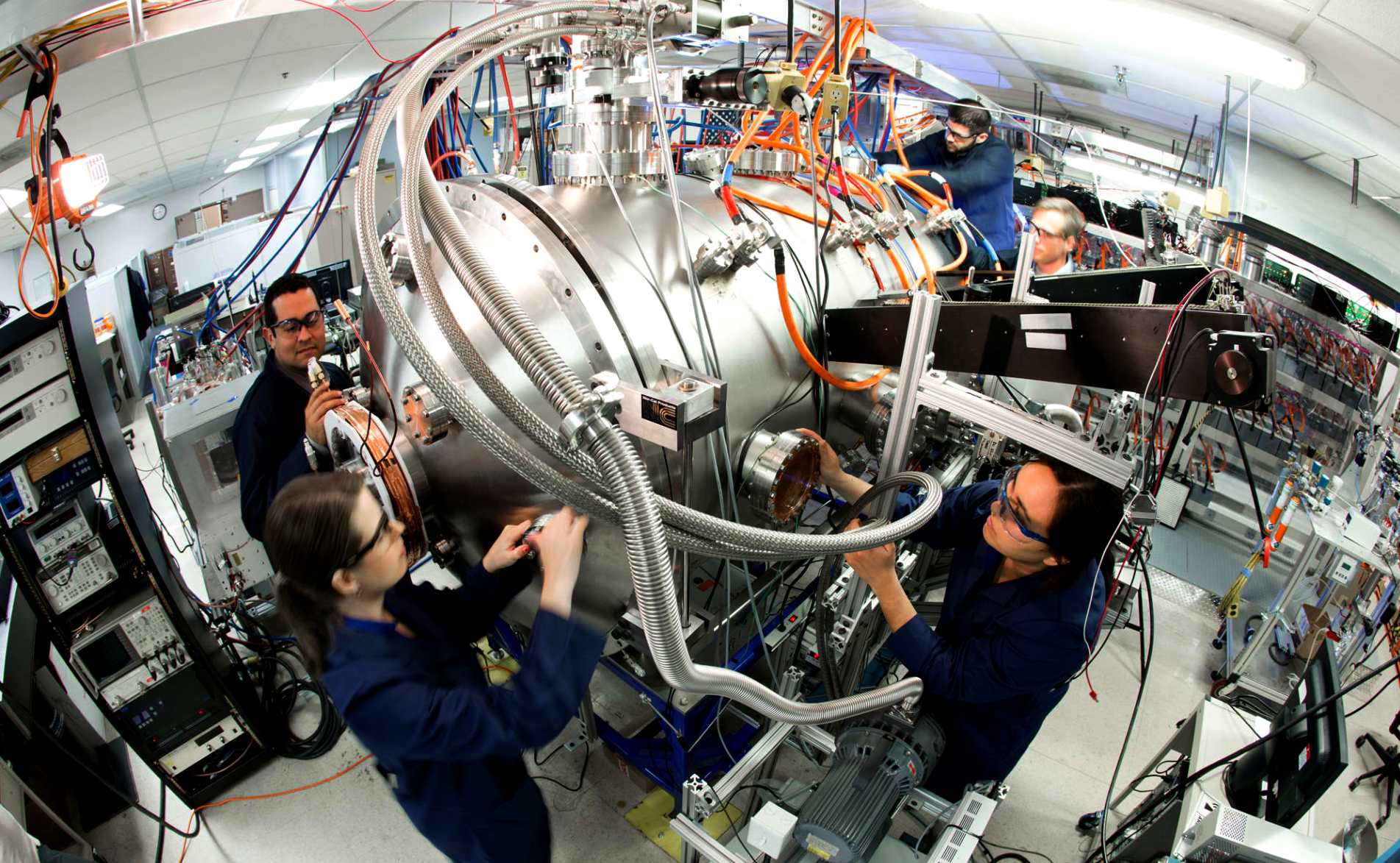
Lockheed has been mum on its progress, but Cohen said that while it’s not a pipe dream, it may not be that close to reality, either.
“This is a field that’s proved over decades to be difficult to master,” he said. “Every 10 years there’s chatter of how we’re going to be close to a breakthrough, and I really hope we are.”
Greenwald, though, thinks the industry is getting closer to putting all the pieces together. Of course, he thinks MIT’s magnetic technology is going to work, but more importantly, he just wants someone to bring this technology to the public.
“Fusion is too important for just one shot on goal,” he said. “Just like when you’re developing pharmaceuticals, it’s good that people are trying different approaches.”
Mowry, who is also confident that his technology will be first to market, agrees the more the merrier. While the attempt to commercialize has been going on for decades, he doesn’t think companies or investors will get tired of waiting.
“Investors love it,” he said. “It answers the existential challenge of
climate change, which motivates a lot of private investors. They like that fusion can’t make a bomb and there’s no long-term waste, and they like that they can access a $10 trillion market opportunity. It’s a great story.”
By Bryan Borzykowski
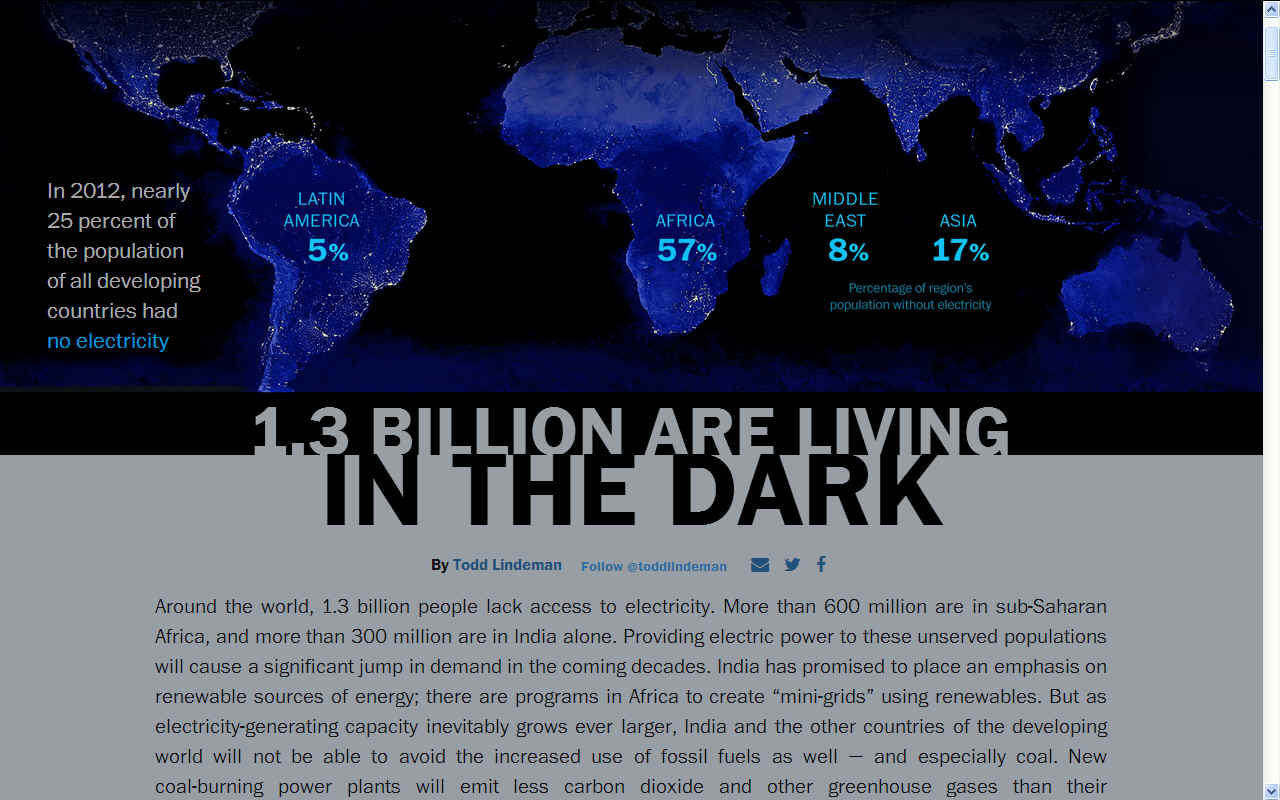
AFRICA
& INDIA - In
2015 a world report concluded that 1.3 billion people were living in the
dark. Rather than looking at this as a problem, we might take the
alternative view that this is an opportunity to build a sustainable off-grid supply
network using only renewables - so ensuring that what might be perceived as
more strain in terms of climate change, might be prevented. We might achieve
this with mobile units to begin with, until the affected regions have time
to build permanent networks with installed wind and solar
energy generators.
You
might argue that they are the lucky ones. If they do not get on the
development merry-go-round, they have nothing to lose. Once you join the
rat-race it is hard to go back to less energy intensive living. There is an
argument for not forcing change on tribes who are perfectly happy as they
are.
LONG TERM SECURITY
In
the short term we are reliant
on fossil fuels to take us into a
sustainable age where a circular economy is recognized as essential to
harmonious living. Long-term measures to increase energy security center on reducing dependence on any one source of imported energy, increasing the number of suppliers, exploiting native
fossil fuel or renewable energy resources, and reducing overall demand through energy conservation measures.
We
might also enter into international agreements to undermine fossil fuel energy trading
monopolies and assure that everyone has the right to cheap and clean
renewable energy, with the need to transport imports. Those
who held the power and wealth should consider re-investing in alternatives
as they head towards the sustainable economics of zero growth.
The deployment of renewable
energy technologies increases the diversity of electricity sources and contributes to the flexibility of
an international infrastructure system and its resistance to central shocks,
especially where off-grid installations are widely deployed, but can be grid
connected.
It
is likely to be that at some point in the future we will no longer need
power stations that run on coal, oil
or nuclear fuels. We will have dragged ourselves out of the fossil
fuel cesspit and taken power generation from the fortunate few who
profit from geological deposits, to the masses who only need a space to
mount the harvesting medium for energy independence.
For those countries
whose reliance on imported
gas is a significant
energy security issue, renewable technologies can provide
a level playing field.
As the fossil resources that have been so crucial to human advancement start declining in numbers, countries will
be glad that they changed over to renewable energy. 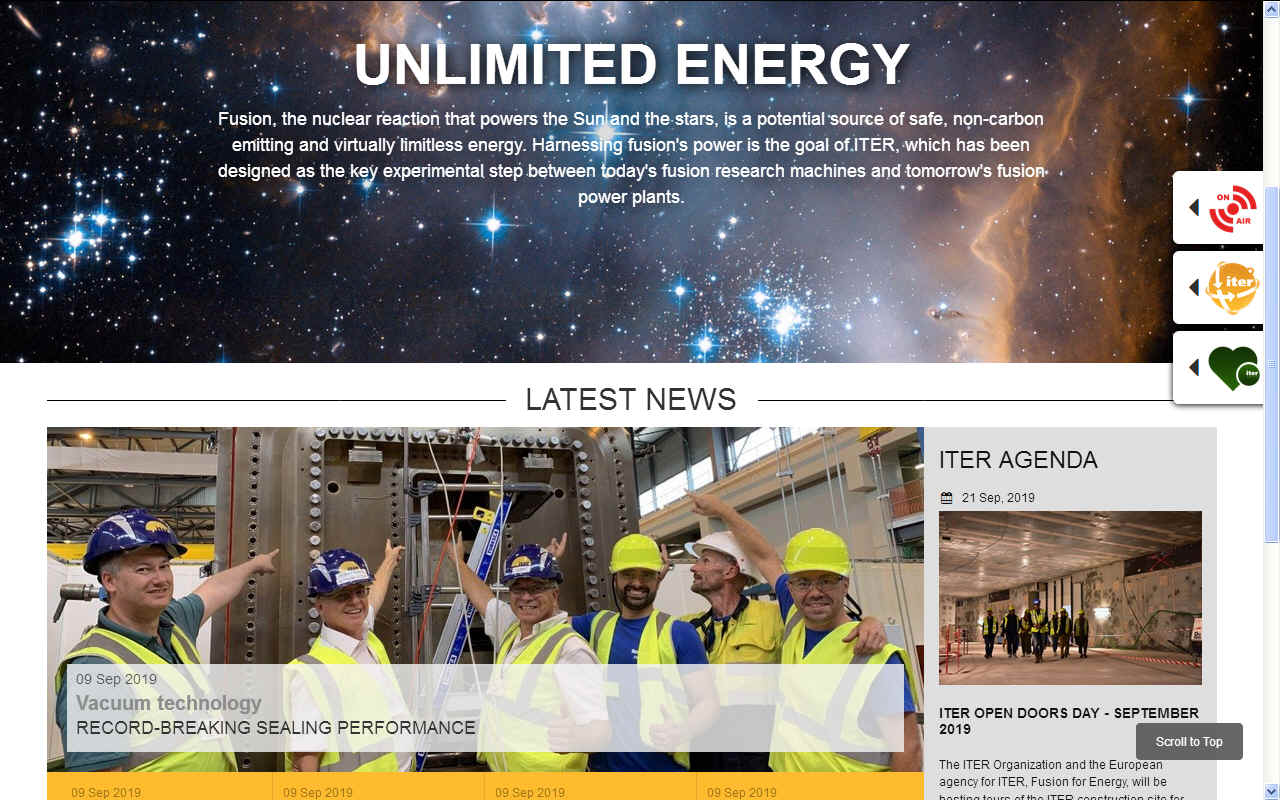
FUSION | BIOFUELS
| GEOTHERMAL
| HYDRO-ELECTRIC
| SOLAR |
WAVE
& TIDAL | WIND
COMPRESSED
GAS - ECONOMY - FUEL
CELLS - FUSION
- HYDRIDES
- LIQUID GAS
FUSION
LINKS
& REFERENCE
Fusion:
Other Labs (Magnetic Confinement)
Fusion:
Research Worldwide
Germany
| Forschungszentrum
Jülich - Institute of Energy and Climate Research (TEXTOR
experiment) |
Karlsruhe
Institute of Technology (KIT), Nuclear Fusion Programme |
| Max
Planck Institute for Plasma Physics (IPP), Garching (ASDEX
experiment) |
Christian
Albrechts Univ. (CAU), Kiel, Plasma Dynamics Group |
| GSI
Darmstadt, Helmsholtz Centre for Heavy Ion Research |
Heinrich-Heine-Univ.
Duesseldorf, Inst. of Laser & Plasma Physics |
| Heinrich-Heine-Univ.
Duesseldorf, Inst. of Theoretical Physics |
Leibniz
Inst. for Plasma Science & Technology, INP
Greifswald |
| Ruhr-Univ.
Bochum, Inst. for Experimental Physics V |
Technical
Univ. of Darmstadt, Laser & Plasma Physics (site in
German) |
| Technical
Univ. of Dresden, IKTP, Inst. of Nuclear & Particle
Physics |
Univ.
of Augsburg, Inst. for Physics |
| Univ.
of Ruhr, Dept. of Physics & Astronomy |
Univ.
of Stuttgart, Inst of Interfacial Process Engineering
and Plasma Technology (TJ-K torsatron) |
| IPP
Greifswald (Wendelstein 7-X Experiment) |
Jülich
Supercomputing Centre (JSC) |
Italy
| Istituto
di Fisica del Plasma ENEA CNR, Milano |
Consortio
RFX Padova, ENEA (PRIMA facility) |
| RFX
Reversed Field Pinch Experiment, Padova |
Centro
Ricerche Frascati, ENEA (FTU Experiment) |
| Politecnico
di Torino, Condensed Matter Physics |
CMFD
Magnetofluiddynamics Consortium, Trieste |
| CREATE
Consortium (Consorzio di Ricerca per l'Energia e le
Applicazione Technologiche dell'Elettromagnetismo) |
Istituto
Nazionale di Ottica, Intense Laser Irradiation
Laboratory (ILIL), Pisa |
| Italien
National Agency for New Technology, Energy and
Environment (ENEA) |
IGNITOR
Experiment, ENEA, Frascati |
Japan
| QST
Naka Fusion Institute (home to ITER Japan) |
JT-60SA
Experiment |
| Broader
Approach R&D Center (IFMIF/EVEDA) |
National
Institute for Fusion Science (NIFS) (LHD Experiment) |
| Kyoto
University, Advanced Plasma Energy (Heliotron J
Experiement) |
Osaka
University, Institute of Laser Engineering |
| University
of Tsukuba, Plasma Research Center |
The
Japan Society of Plasma Science and Nuclear Fusion
Research |
| Ministry
of Education, Culture, Sports, Science and Technology (MEXT) |
Nagoya
University, Ohno Lab, HYBTOK-II Experiment |
| University
of Tokyo, Takase-Ejiri Laboratory (TST-2 Experiment) |
Tokyo
Institute of Technology, Laboratory for Advanced Nuclear
Energy |
| National
Institutes for Quantum and Radiological Science and
Technology (QST), Fusion Directorate |
Fusion
Energy Forum of Japan (QST) |
| Hanada
Laboratory (QUEST experiment) |
QST
Rokkasho Fusion Institute |
United Kingdom
| Culham
Centre for Fusion Energy CCFE (JET and MAST experiments) |
Engineering
and Physical Sciences Research Council (funding) |
| Imperial
College, London University, Plasma Physics Group |
Institution
of Mechanical Engineers |
| Queen's
University, Belfast, Centre for Plasma Physics |
United
Kingdom Atomic Energy Authority, UKAEA |
| University
of Glasgow, Astronomy & Astrophysics |
University
of Manchester, Dalton Nuclear Institute |
| University
of Manchester, School of Physics and Astronomy |
University
of Warwick, Centre for Fusion, Space and Astrophysics |
| University
of York, York Plasma Institute |
EUROfusion
(JET experiment) |
| Fusion
Centre for Doctoral Training (FUSION CDT) |
RACE
(Remote Applications in Challenging Environments) |
| University
of Manchester, Henry Royce Institute for Advanced
Materials |
Technological
Plasmas Research Group, University of Liverpool |
| Durham
Energy Institute, Materials for Fusion Energy |
Durham
University Centre for Advanced Instrumentation, Fusion
Diagnostics |
| University
of Strathclyde Glasgow, Physics |
University
of Liverpool, Faculty of Science and Engineering |
| University
of Oxford, Science and Technology of Fusion Energy |
University
of Oxford, Theoretical Astrophysics & Plasma Physics |
| University
of Bristol, Faculty of Engineering |
UKAEA
Fusion Technology Facilities |
| IOP
Institute of Physics, Plasma Physics Group |
United States (National
Laboratories)
| Argonne
National Laboratory, Engineering Development and
Applications, Illinois |
General
Atomics Magnetic Fusion Energy Research, San Diego (DIII-D
Experiment) |
| General
Atomics, Energy, San Diego |
Lawrence
Berkeley National Lab: Fusion Science and NDCX-II (Heavy
Ion Fusion Program) |
| Idaho
National Laboratory |
Lawrence
Livermore National Laboratory (LLNL), National Ignition
Facility |
| Los
Alamos National Laboratory, Fusion Energy Sciences |
Naval
Research Laboratory, Plasma Physics Division |
| Oak
Ridge National Laboratory (home to US ITER) |
Princeton
Plasma Physics Laboratory (PPPL), (LTX, NSTX-U
Experiments) |
| Sandia
National Laboratory, Albuquerque, New Mexico, Fusion
Energy Sciences |
Lawrence
Berkeley National Laboratory - National Energy Research
Scientific Computing Center (NERSC) |
| National
High Magnetic Field Laboratory |
Lawrence
Berkeley National Laboratory - Accelerator Technology
& Applied Physics Division |
| Lawrence
Livermore National Laboratory, Physical and Life
Sciences Directorate |
Los
Alamos National Laboratory, Plasma Physics |
| Innovation
Network for Fusion Energy (INFUSE) |
United States (Universities)
| Auburn
University, Alabama, Department of Physics. Auburn
Fusion Lab |
California
Institute of Technology (Caltech), Bellan Plasma Group |
| Columbia
University, New York, Applied Physics and Applied
Mathematics |
Columbia
University, New York, Plasma Physics Laboratory (HB-TEP
Experiment) |
| Cornell
University, Ithica, New York, Laboratory of Plasma
Studies |
Dartmouth
College, Department of Physics and Astronomy |
| Georgia
Institute of Technology, Atlanta, Fusion Research Center |
MIT
Plasma Science and Fusion Center (SPARC concept, Alcator
C-Mod, LDX Experiment) |
| Princeton
University, Graduate Program in Plasma Physics |
Rensselaer
Polytechnical Institute (RPI), Troy, NY, Plasma Dynamics
Laboratory |
| Swarthmore
College, Pennsylvania, Department of Physics and
Astronomy, Spheromak Experiment |
University
of California, Berkeley, Department of Physics |
| University
of California, Davis, Millimeter Wave Research Center |
University
of California, Irvine, Physics and Astronomy |
| University
of California, Los Angeles, Plasma Science and
Technology Institute |
University
of California, San Diego, ARIES program |
| University
of California, San Diego, Advanced Energy Technology
Group |
University
of California, San Diego, Center for Energy Research
(PISCES program) |
| University
of Colorado, Boulder, Center for Integrated Plasma
Studies |
University
of Illinois, Urbana/Champaign, Fusion Studies Laboratory |
| University
of Maryland, Center for Multiscale Plasma Dynamics |
University
of Maryland, Institute for Research in Electronics and
Applied Physics |
| University
of Michigan, Plasma, Pulsed Power, and Microwave
Laboratory |
University
of Rochester, NY, Laboratory for Laser Energetics |
| University
of Southern California, Los Angeles, Pulsed Power
Research Group |
University
of Texas, Austin, Institute for Fusion Studies |
| University
of Wisconson-Madison, Fusion Technology Institute |
College
of William and Mary, Physics |
| Florida
A+M University, Center for Plasma Science and Technology |
Florida
State University, National High Magnetic Field
Laboratory |
| University
of California, Davis/Sandia Laboratory collaboration:
Compact Toroid Injection project |
University
of Iowa, Department of Physics and Astronomy |
| University
of Montana, Plasma Physics Group |
University
of Washington, Plasma Science and Innovation Center |
| Utah
State University, Plasma Physics |
University
of Wisconson-Madison, Engineering Physics Department
(Pegasus Experiment) |
| University
of Wisconson-Madison, Center for Plasma in the
Laboratory (MST Experiment) |
University
of Wisconson-Madison, Fusion and Plasma |
| University
of California, Los Angeles, Fusion Science and
Technology Center |
University
of Rochester, NY, Fusion Science Center |
| Lehigh
University, Mechanical Engineering & Mechanics,
Laboratory for Control of Complex Physical Systems |
Michigan
Institute for Plasma Science and Engineering (MIPSE) |
International
Organizations
Fusion:
General Interest
Journals
|
https://www.cnbc.com/2019/03/06/bezos-microsoft-bet-on-a-10-trillion-energy-fix-for-the-planet.html

Please
use our A-Z
INDEX to navigate this site
|